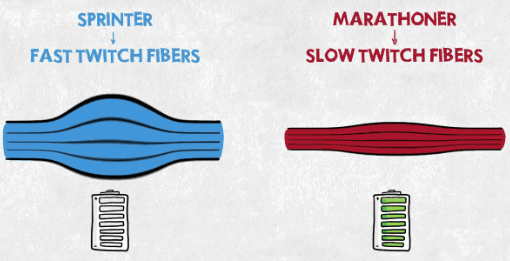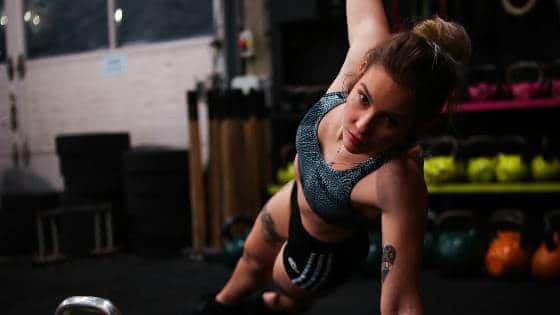A 2019 study showed that there are only two types of people in this world:
- Those who hate cardio.
- Those who don’t know what cardio is.
Which one are you?
Kidding! There are some people out there that love cardio, I think…
Anyway, if you’re a strength or physique athlete, the type, intensity, and amount of cardio you do can affect your ability to increase strength and muscle mass.
On the other hand, if you’re someone who’s just looking to lose some weight, choosing between HIIT, MISS, and LISS might not be much of a concern.
In this article, you’ll learn how each type of cardio interferes with strength and hypertrophy, the pros and cons of each, how many sessions you should have per week, and more.
Table of Contents
Difference Between Weight Loss & Fat Loss
Before starting, it’s important that we know the difference between weight Loss and fat loss.
Weight loss is a broad term that can mean anything that causes you to weigh less, such as water, glycogen, and muscle.
Fat loss focuses on losing weight while maintaining as much lean muscle as possible, which can give you a more toned and fit figure.
Explore More: Does Fasted Cardio Burn More Fat?
The Different Intensities of Cardio
What is HIIT Cardio?
HIIT stands for High-Intensity Interval Training.
This consists of doing short bouts of high-intensity exercise, typically for 10-30 seconds, where you bring your heart rate up to ~90% of your max heart rate, followed by a few seconds of rest and then repeat.
Example of HIIT Cardio
- Intervals of 20-second sprints followed by 40-second rest.
- Intervals of 20-second high-intensity, high-resistance on the spin bike followed by 40 seconds low-intensity and low-resistance.
What is MISS Cardio?
MISS stands for Moderate Intensity Steady State cardio.
This is any cardio activity where you keep your heart rate between 140-160 BPM.
Example of MISS Cardio
Elliptical, spin bike, stair master, jogging, arc trainer, rowing, treadmill, and more.
What is LISS Cardio?
LISS stands for Low-Intensity Steady State Cardio.
This is any cardio activity where you keep your heart rate between 100-130 BPM.
Example of LISS
Walking, biking, elliptical, stair master, arc trainer, etc.
Start your journey to losing 24-60 pounds in just 12 weeks.
Get the free 12-Week Fat Loss Challenge Training Guide!

Estimating Calories Burned With Each Type of Cardio
You can get an estimate of the calories you’d burn based on your current body weight and the intensity of your cardio session.
- LISS: ~0.2 cal per pound of body weight per 10 minutes.
- MISS: ~0.45 cal per pound of body weight per 10 minutes.
- HIIT: ~0.7 cal per pound of body weight per 10 minutes.
These estimations, however, can vary slightly depending on your current body fat percentage and height. (1)
For example, let’s say you’re a 120 lb woman doing MISS, it would take you 10 minutes to burn ~54 calories (0.45 x 120 = 54).
Devices to Track Calories Burned
Other ways to track calories burned is by using the built-in monitors in the cardio machines at the gym or to use heart rate monitors like the Polar Watch, Apple Watch, or FitBit.
These devices won’t be super accurate but will give you a good baseline to work with as long as you stay consistent in using the same device.
Constantly switching from one device to another can make it difficult to know when you should add or reduce cardio.
Interference With Strength and Hypertrophy
Your goal will be important in deciding which intensity of cardio to choose.
If your goal is plain weight loss, then you may not need to worry too much about endurance adaptations.
On the other hand, if you’re a physique or strength athlete, you should pay close attention to the intensity, type, and quantity of cardio you do, as some of these can cause endurance adaptations that will slow muscle growth and strength.
The adaptations and training needed to produce endurance adaptations can interfere with the adaptations and training needed to build muscle and increase strength. (2)
That’s why you often see endurance athletes, like long-distance runners, having less muscle mass than sprinters.

HIIT and Interference
Since the stress that comes from HIIT cardio is similar to the stress from resistance training, there is less risk of creating endurance adaptations.
However, too many HIIT sessions can affect proper recovery (more on this later).
MISS and Interference
MISS cardio is the intensity that causes the most interference, especially if it’s a higher impact type of cardio, like the stair master or treadmill with an incline.
LISS and Interference
Less interference than MISS, however, it also burns fewer calories.
Cardio and Recovery
The intensity, type, and length of the cardio sessions that you do can deplete your glycogen levels, increase stress on your joints, and cause muscle soreness, which can affect recovery and hinder training performance. (3)
Equipment like the stair master or the treadmill with a significant incline can cause more impact and muscle contractions.
A study (4) showed that doing cardio in a bike has less interference with recovery and hypertrophy than doing cardio on an inclined treadmill.
HIIT and Recovery
From everything I mentioned above, it may seem like HIIT is the way to go, right? It takes less time, has a lower risk of endurance adaptations, and burns more calories.
However, since HIIT is similar to resistance training, it takes a few days to recover from.
Adding HIIT to your routine depends on your current training split and how you’re recovering from it.
For example, if you’re training legs 2 or 3 times a week and then doing a few lower body focused HIIT sessions, like sprints, your legs are most likely not recovering well.
At this point, you could maybe add some upper body focused HIIT sessions, like the rowing machine with your feet on the ground, or add those lower-body focused HIIT sessions at the end of your leg day.
MISS and Recovery
MISS is the intensity that will cause the most interference.
Too many and longer MISS sessions can deplete muscle glycogen and cause muscle soreness that will interfere with proper recovery.
LISS and Recovery
LISS seems to be the intensity that interferes the least.
Again, depending on the type of cardio, LISS doesn’t cause much endurance adaptations, muscle soreness, or stress on the joints.
Explore More: Why & How to Warm Up Before Workouts
Pros and Cons of Each Type of Cardio
HIIT
- Pros: more calories burned per minute, time-efficient, lower risk of endurance adaptations.
- Cons: longer recovery time, higher risk of injury.
MISS
- Pros: more calories burned than LISS. If you’re just looking to lose weight and don’t mind the endurance adaptations, this intensity may be good for you.
- Cons: causes the most endurance adaptations, longer recovery than LISS, can affect performance.
LISS
- Pros: no endurance adaptations, not much recovery time needed.
- Cons: burns the least amount of calories so you may need to do lots of it.
How Many Sessions Should I Have?
Based on everything we talked about before, here are some recommended limits for your cardio sessions:
- HIIT: 1 – 2 sessions per week.
- MISS: up to 1 hour total per week.
- LISS: as many as needed to reach your desired rate of weight loss.
Try to do these sessions on equipment that doesn’t cause much impact, like the spin bike or elliptical.
To Summarize
Choosing the right intensity, length, and type of cardio depends on your goals.
For strength and physique athletes, a couple of HIIT sessions per week, up to 1 hour total of MISS per week, and a few LISS sessions to get your fat loss going would be ideal.
Remember, for strength and physique athletes, the majority of the deficit will come from the diet.
Since female athletes typically have a lower TDEE, they may require a little more cardio, as bringing calories too low can cause nutrient deficiencies that can negatively affect health and body composition.
If you’re only a person trying to lose weight, then HIIT and MISS may help you lose weight faster than LISS.
I hope you enjoyed this article about HIIT, MISS, and LISS cardio.
Q: Which is your favorite intensity of cardio? Let me know in the comment section below!
If you’re ready to start your weight loss journey, the 12-Week Fat Loss Challenge is the place to start!

This plan helps men and women lose fat without starving themselves or giving up their favorite foods.

